I’ve been there.
I plowed through the first draft of my nonfiction book without regard to book structure.
And why wouldn’t I?
I was a first-time author and didn’t know what book structure was.
My Colossal Mistake
Being new, I followed an author’s well-meaning but detrimental advice.
This was a colossal mistake.
Yes, the recommendation to “just write” with reckless abandonment produced a 50,000-word first draft, just as the author promised.
But sadly, it was an incoherent mess. The content was solid, but the draft lacked the logical flow and framework that creates an excellent reader experience.
I spent many excruciating hours fixing it, which I would have avoided had I structured and outlined my book up-front.
But don’t worry.
If you’ve already written your first draft without nailing your structure, it’s not too late. You can still shape it into a nonfiction book that will delight your ideal reader.
And if you still need to write your first draft, you’re just in time to avoid the costly mistake I made.
In this article, I briefly share what book structure is and break down five (5) easy and proven ways to structure your nonfiction book, even if you’re a beginner.
What is Nonfiction Book Structure?
Book structure is the framework for organizing your nonfiction book.
It provides your book with consistency, logical flow, and progression, which helps your reader follow, digest, and apply your solutions.
High-quality book structure is captivating and visually compelling. The purpose of nonfiction book structure is to deliver an excellent reader experience and the promised results.
Here are five ways to structure your nonfiction book that are easy to implement and used by professionals. They’re simple but highly effective.
In this article, I’ll go over 5 Easy Ways to Structure a Nonfiction Book. And for good measure, I’ll cover 6 Advanced Ways in the next article.
5 Easy Ways to Structure Your Nonfiction Book
In addition to the five book structures listed below, here a bonus video on how to use the Q&A Book Structure: Click Here
1. Chronological
Chronological book structure is arranged based on a timeline or a time-based sequence of events. It’s typical in history books, with sections and chapters dividing major historical events.
Chronological Example 1

World War II: The Definitive Visual History from Blitzkrieg to the Atom Bomb is a classic example of chronological book structure.1 Each chapter spotlights the events of the war in chronological order.
Here are four sample chapter titles:
- “1 – The Seeds of War 1914 – 1938”
- “3 – Germany Triumphant 1940”
- “5 – The Allies Turn the Tide 1943”
- “9 – Aftermath 1946 – 1950”2
Chronological book structure is not limited to history books. Here’s an example of a parenting book that uses it too.
Chronological Example 2
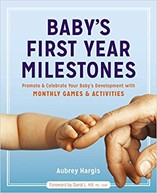
Baby’s First Year Milestones: Promote and Celebrate Your Baby’s Development with Monthly Games and Activities by Aubrey Hargis applies a chronological book structure.3
The book has 12 chapters, each dedicated to a month in the baby’s life. The chapters are titled “Month 1,” “Month 2,” “Month 3,” and so forth.4
This simplicity brilliant.
The parents of a newborn baby desperately trying to navigate the challenges of parenting don’t need or want complicated.
Your nonfiction book structure is about creating a great reader experience.
2. Step-by-Step
The step-by-step book structure, also called process-based, walks your ideal reader through the steps required to achieve a result.
Step-by-Step Example
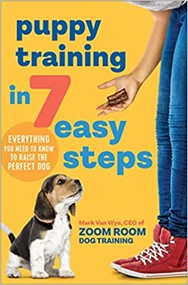
Puppy Training in 7 Easy Steps: Everything You Need to Know to Raise the Perfect Dog by Mark Van Wye employs a straightforward step-by-step structure.5
Each chapter explains a crucial step in the puppy training process.
Here are three:
- “Step 1 – Bringing Your Puppy Home”
- “Step 2 – Crate Training”
- “Step 3 – Potty Training”6
This unpretentious step-by-step approach demystifies what may feel like an overwhelming process to new fur baby parents.
3. Topic-Based
In topic-based structure, your nonfiction book revolves around an overarching theme, and each chapter highlights a supporting topic.
This is a fast and easy way to organize and write your first nonfiction book.
If you own a blog, you can organize your posts into a topic-based book.
If you’re starting with no content, you can quickly:
- Brainstorm potential topics,
- Validate market demand for each, and
- Select the winning nonfiction book topic your readers will buy and love.
Topic-Based Example
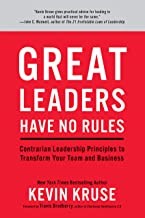
Kevin Kruse’s book, Great Leaders Have No Rules: Contrarian Leadership Principles to Transform Your Team and Business, is the perfect example of a topic-based book.7
Each chapter stays true to the theme of contrarian leadership principles. Here’s a small sample:
- “1 Close Your Open Door Policy”
- “4 Be Likeable Not Liked”
- “7 Play Favorites”
- “9 Show Weakness”8
Also, just because the book is topic-based doesn’t mean it’s superficial. Kruse incorporates stories, examples, and research that add depth and value to the content.
4. Tip-Based
Tip-based book structure is similar to topic-based. However, instead of covering complete topics, it provides lots of quick tips that support the book’s core idea.
Tip-Based Example 1

Judith A. Belmont’s 150 More Group Therapy Activities and Tips 9 clearly depicts tip-based structure. The table of contents lays out seven chapters, each comprised of a collection of tips.
Here are Belmont’s first three chapters:
- “Chapter 1: Group Beginnings”
- “Chapter 2: Metaphorical and Multi-Modality Learning Activities”
- “Chapter 3: Communication Skills”10
Now let’s look at three tips from “Chapter 3: Communication Skills:”
- “Tip #35 – Basic Human Rights”
- “Tip #36 – You Have a Right and a Responsibility”
- “Tip #49 – Practice Turning You-Messages into I-Messages”11
Tip-Based Example 2
Another way to assemble a tip-based book is to feature one tip per chapter. Here are the first three chapter titles of a fictitious example I made up for a book about how to get a job:
- “Tip 1 – Update Your Resume”
- “Tip 2 – Tell Your Friends, Family, and Colleagues You’re Looking for Work”
- “Tip 3 – Update Your LinkedIn Profile” 12
To help the reader quickly access your tips, you can list the tip number and title in your table of contents. Not only does this make your book user-friendly, but it contributes to your book’s marketing and sales.
Book buyers often peek into the table of contents to see what they’re getting. Enticing chapter titles can convert a book browser into a book buyer.
5. Quote-Based
Using quotes as the backbone of your nonfiction book is another fast and easy way to write and publish a nonfiction book.
I know this sounds self-centered, but it’s best to quote yourself. This gives you exposure and builds your influence. However, if you decide to quote other people’s work, secure their permission so you can avoid legal issues down the line.
Quote-Based Example
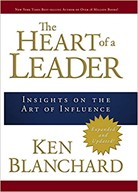
One of my favorite examples of a quote-based book is The Heart of a Leader: Insights on the Art of Influence by Ken Blanchard.13
When you crack open Blanchard’s book, you see the title page, the copyright page, and the introduction. However, there’s no table of contents. It goes straight from the introduction to the first quote.
It doesn’t have chapters. It’s purely a book of quotes.
The even pages (on the left) hold a big, bold quote inside a stylized quote box. The odd pages (on the right) provide additional related insights. The entire book is structured this way, from pages 4 through 189.
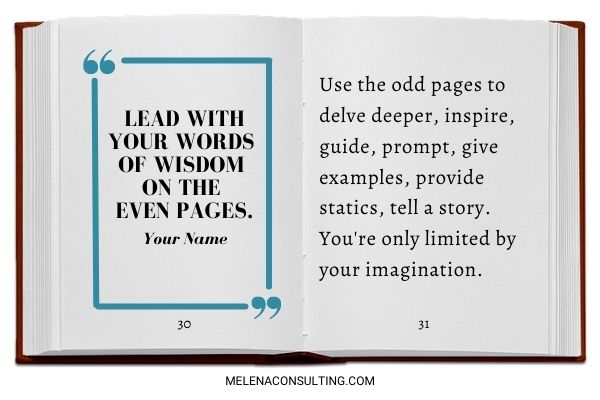
If done well, quote-based books are inspirational.
A WORD OF CAUTION IF YOU’RE THINKING ABOUT USING OTHER PEOPLE’S QUOTES: Secure the appropriate written permissions. Intellectual property law is complicated. Seek appropriate legal guidance.
By the way, I’m not an attorney so I can’t provide legal counsel.
However, I can recommend that you use your own quotes. It will build your authority and amplify your voice. This book structure is so simple that you could pull the quotes from your blogs, past social media posts, your podcast, and other content.
What’s more, the five types of nonfiction book structure I shared in this post are easy to apply. But did you know that there are 6 Advanced Ways to Structure a Nonfiction Book Like a Pro you can also apply even if you’re a first time author? You can read about them in the next article.
Structuring your book is paramount for excellent reader experience and for your book’s success. However, the structure doesn’t have to be complicated. You can easily use one of these five simple book structures to create a strong book your ideal reader will buy and love.
Get Your Free Course
Start your nonfiction book the right way with your FREE “Nonfiction Book JumpStart” minicourse.
Write Your First Draft — FAST
Have you been yearning to write your first nonfiction book, but don’t know where to start? The “First Draft Accelerator” self-paced online course will take you from vague idea to the first draft of a nonfiction book that sells — on the fast track!
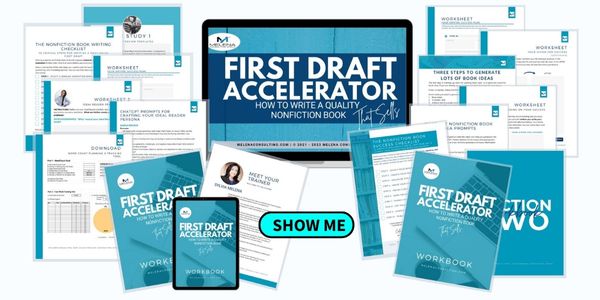
About Sylvia Melena

SYLVIA MELENA is the Founder and CEO of Melena Consulting Group, a leadership and management consulting, training, and publishing company. She is also the international award-winning author of Supportive Accountability: How to Inspire People and Improve Performance and the Vice President of the San Diego Book Awards Association. As an unknown author with zero platform, Sylvia’s first book gave her exposure in the Society of Human Resources Management HR Today, Entrepreneur, the Human Performance Association, My Quest for the Best, LEADx, Fit Small Business, and other outlets.
REFERENCES 1, 2 Sturgeon, Alison. World War II: The Definitive Visual History: From Blitzkrieg to the Atom Bomb. New York, NY: DK Publishing, 2015. 3, 4 Hargis, Aubrey, Baby's First Year Milestones: Promote & Celebrate Your Baby's Development with Monthly Games & Activities. Emeryville, CA: Rockridge Press, 2018. 5, 6 Wye, Van Mark. Puppy Training in 7 Easy Steps: Everything You Need to Know to Raise the Perfect Dog. Emeryville, CA: Rockridge Press, 2019. 7, 8 Kruse, Kevin. Great Leaders Have No Rules: Contrarian Leadership Principles to Transform Your Team and Business. New York: Rodale Books, 2019. 9, 10, 11 Belmont, Judith A. 150 More Group Therapy Activities & Tips: Handouts, Activities, Worksheets. Eau Claire, WI: PESI Publishing & Media, 2016. 12 This is a fictitious example. 13 Blanchard, Kenneth H. The Heart of a Leader: Insights on the Art of Influence. Colorado Springs, CO: David C. Cook Publishing Company, 2007.



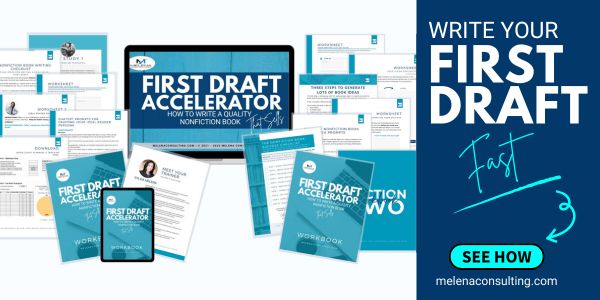
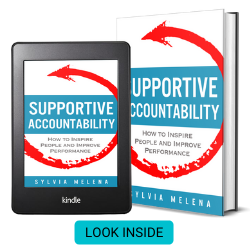




Hi Sylvia, very good article. You covered a lot of ground. Yes, you can write a non-fiction book in no time if you are organized and have a great TOC. I wrote my last non-fiction book – Bipolar 1 Rescue Plan: A Practical Guide for You and Your Family in nine weeks recently because I knew where I was going and it is my subject.
My first book, How to Live with Bipolar, and the one I am writing now, is a question and answer book and has proved to be very popular because people can choose what ever takes their fancy at that moment.
I write for Quora and have written over 4,000 answers so I have enough for many more question and answer books. The only thing is, it is boring to have to put together! Can’t be helped.
Best wishes,
Sally
Hi, Sally.
I’m glad you shared the Q&A structure, as it’s also an easy one to implement.
Thanks for sharing your experience and the way you leverage Quora. I love how you help people while finding out what they need. With over 4000 Quora Q&As, you definitely have some great content for more books. Plus, you already know there’s market demand because you answered the questions people are already asking. And you built a Quora audience. So many wins all around!
Sylvia Melena